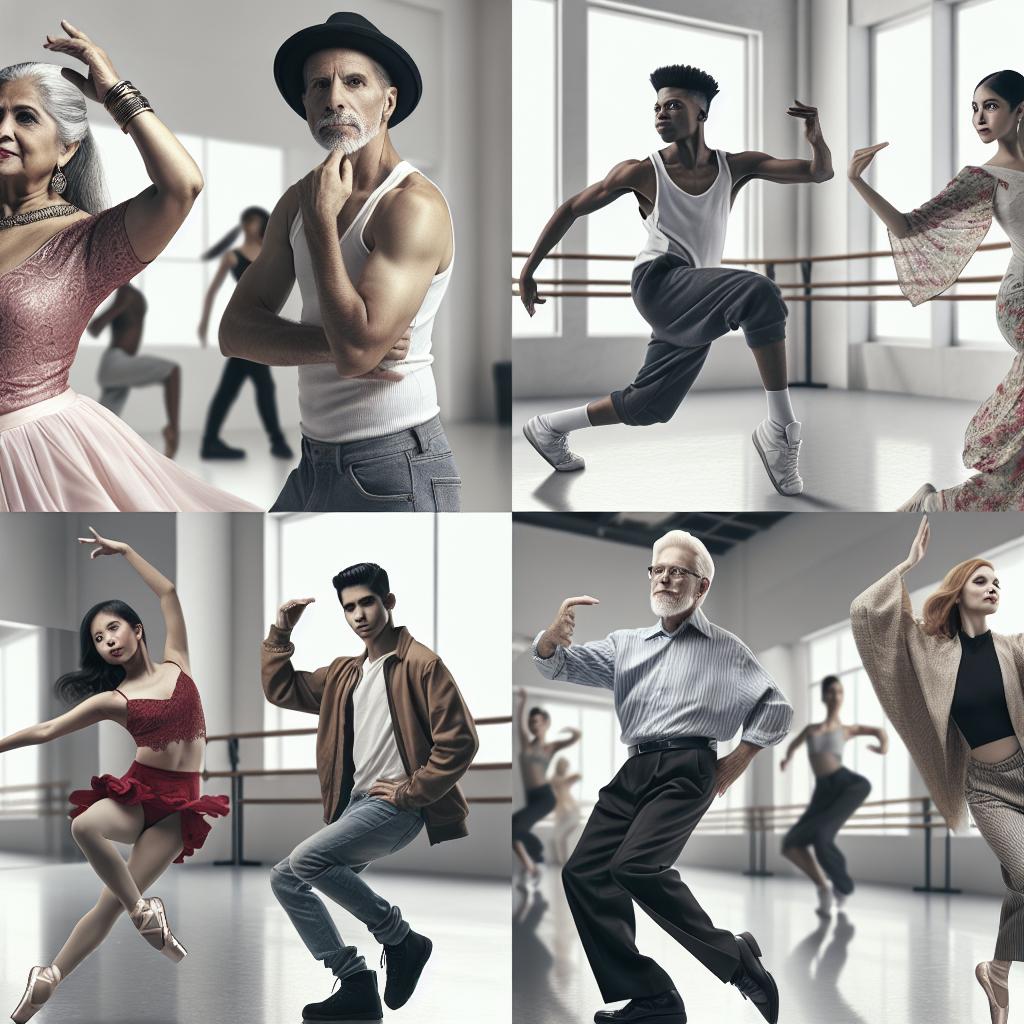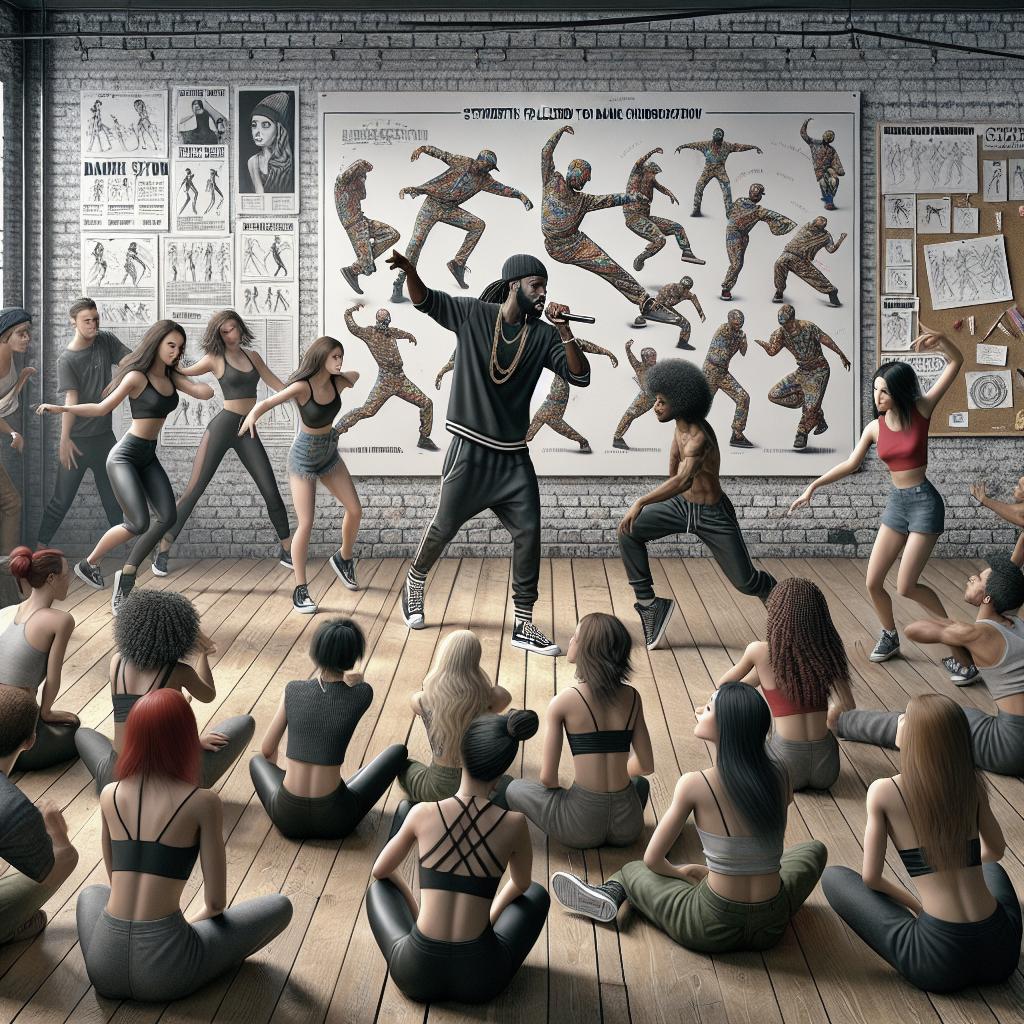The Dynamics of Dance: A Dive Into Today’s Popular Styles
Dance is an ever-evolving art form that reflects cultural shifts and influences. From the classical elegance of ballet to the energetic moves of hip hop, dance styles captivate audiences with their diversity and expressiveness. This blog post delves into the world’s most popular dance styles today, exploring their origins, unique characteristics, and the elements that contribute to their global appeal. We will also address how social media and international cultural exchanges shape these trends, offering insights into the dance world’s vibrant landscape. Whether you’re an aspiring dancer or a curious observer, you’ll discover exciting dance phenomena shaping the entertainment and cultural scenes. Read on to learn about the top 10 dance styles of 2024, the impact of new trends, and what the future holds for dance enthusiasts worldwide.
About Most Popular Types of Dance
Dance, as an art form, provides a universal language that transcends borders. While there are countless styles around the world, some have achieved remarkable popularity due to their adaptability, cultural significance, or sheer entertainment value. The most popular types of dance today serve as reflections of both traditional roots and modern innovation.
Over the years, many dance styles have merged, evolved, and expanded their reach, driven by a combination of cultural interactions and technological advances. This evolution in dance is influenced by factors such as global media transmission, ease of travel, and the rising influence of digital platforms like social media, which have amplified exposure and enthusiasm for different dance forms.
Top 10 Most Popular Dance Styles
The diversity within the top 10 dance styles showcases an intriguing blend of the old and the new. Each style holds unique appeal, characterized by distinct movements, rhythms, and narratives. These dance forms have emerged at the forefront due to their cultural impact, widespread teaching practices, and adoption by international communities.
As the global stage continues to evolve, these styles frequently interact and influence each other, allowing for even greater innovation and fusion. Many of these dance forms have transcended their geographical origins to become international phenomena, captivating audiences and encouraging participation on a global scale.
Most Popular Type of Dance – Ballet
Ballet holds the distinction of being one of the most revered and influential dance forms worldwide. Emerging from the Italian Renaissance courts in the 15th century, ballet has since evolved into a highly technical form associated primarily with the formal concert dance tradition. Its influence can be seen in many modern dances and has played a crucial role in shaping the discipline of dance education.
With its graceful movements, precise techniques, and defined gestures, ballet has maintained its allure across generations. Ballet companies and schools thrive globally, performing both classic repertoires and experimental contemporary works that explore new storytelling and choreographic challenges. Despite its ancient roots, ballet remains a cornerstone in training and performance, continuously reinventing itself.
Second Most Popular Type of Dance – Tap Dance
Tap dance is a uniquely American art form that combines elements of sound and movement with its distinctive percussive footwork. Emerging in the early 19th century, it draws from a blend of African rhythm and Irish jigs, leading to the development of its characteristic syncopated beats and rhythms.
Popularized by dancers like Fred Astaire and Gene Kelly, tap dance has maintained a presence in both Broadway productions and the jazz club circuit. Its dynamic sound and adaptability to modern music have allowed it to remain a favorite in performance arts and as a recreational dance form, suitable for all ages.
Third Most Popular Type of Dance – Hip Hop
Hip Hop, a street style originating from African American and Latino communities in the Bronx during the 1970s, has grown to become a global sensation. With its roots in breaking, locking, and popping, hip hop serves as both a dance form and a cultural movement, emphasizing personal expression and freedom.
The energetic and improvisational nature of hip hop has made it a staple in dance competitions, performances, and entertainment industries globally. Its continual evolution, reflecting the latest music and social narratives, ensures its relevance and popularity among younger generations and dance enthusiasts worldwide.
Fourth Most Popular Type of Dance – Bharatnatyam
Bharatnatyam, one of the classical dance styles of India, is steeped in artistic rigor and traditional narratives. Originating from Tamil Nadu, this dance form combines intricate footwork, expressive gestures, and elaborate costumes to narrate stories of mythological themes.
Bharatnatyam has transcended its regional roots and garnered appreciation from dance enthusiasts and scholars globally. Its spiritual and historical importance appeals to audiences interested in cultural depth and storytelling, whilst contemporary adaptations continue to bring fresh interpretations and appeal to wider audiences.
Fifth Most Popular Type of Dance – Salsa
Salsa, with its lively rhythms and energetic steps, is a popular social dance form with a rich multicultural history. Originating in the Caribbean, it has been shaped by influences from Cuba, Puerto Rico, and Colombia, amongst others. Salsa music typically combines elements of jazz, Afro-Cuban rhythms, and traditional Latin sounds.
Known for its flirtatious interactions and vibrant energy, salsa clubs flourish worldwide, providing platforms for both amateurs and seasoned dancers. The social and inclusive nature of salsa makes it one of the most accessible and popular social dances, inviting dancers of all skill levels to participate and explore.
Sixth Most Popular Type of Dance – Ballroom
Ballroom dance, characterized by its partner-based style, exemplifies grace and synchronization. This category includes several dances such as the waltz, tango, and foxtrot, each bringing unique flair and differing styles, from earthy to elegant, to the ballroom floor.
As a competitive sport and social pastime, ballroom dance enjoys rigorous teaching standards and global popularity, supported by a network of competitions and exhibitions. Its embodiment of harmony and elegance continues to enchant audiences and participants alike.
Seventh Most Popular Type of Dance – Contemporary
Contemporary dance is a versatile and expressive dance form, emphasizing fluidity and emotional expression. Emerged in the mid-20th century, it absorbed elements from classical ballet, modern dance, and postmodern choreography.
The allure of contemporary dance lies in its adaptability and its capacity to express complex human emotions and ideas. It is continually evolving, incorporating diverse influences, and methods to challenge traditional boundaries, making it a compelling choice for experimental choreographers and audiences.
Eighth Most Popular Type of Dance – Break Dancing
Breakdancing, or b-boying, is a street dance form that has become an iconic representation of hip hop culture. Known for acrobatic and athletic movements, it includes moves such as toprock, downrock, freezes, and power moves.
With its competitive nature, breakdancing has thrived in international competitions, including its recognition as an Olympic sport. Its integration with modern music and dynamic style perpetuates its enduring appeal and global presence.
Ninth Most Popular Type of Dance – Jazz
Jazz dance, with roots in African American musical and dance traditions, is celebrated for its rhythm, improvisational style, and theatricality. Emerging in the early 20th century, jazz dance found its footing in Broadway musicals, Hollywood movies, and global entertainment.
Known for its vibrant technique and expressive power, jazz dance offers flexibility, creativity, and spontaneity while maintaining structured disciplines. Its ability to adapt to new music trends and choreographic innovations ensures its continued popularity on the world stage.
Tenth Most Popular Type of Dance – Kathak
Kathak is a classical Indian dance form from Northern India, renowned for its complex footwork, beautiful spins, and expressive storytelling through facial gestures and intricate movements. It has a rich history tied to temples and courts, evolving into a popular form of narration and performance art.
Kathak’s revival in modern times has found a global audience appreciative of its intricate form and cultural resonance. Dance schools worldwide offering Kathak classes testify to the dance’s enduring appeal and relevance that bridges traditional and contemporary aesthetics.
Most Popular Type of Dance
Determining the single most popular type of dance globally can be subjective due to regional differences and cultural preferences. However, styles such as ballet, hip-hop, and salsa often consistently top the lists, attributed to their broad reach, adaptability, and rich heritage.
These dances not only showcase immense technical skill but also offer varied experiences from classical elegance to street-savvy innovation. They represent a significant influence on both the evolution of new styles and maintaining the traditions from which they originated.
Popular Types of Dance
Aside from the top-ranking styles, many other popular forms enrich the global dance tapestry. Folk dances, modern fusions like K-pop dance, and cultural staples such as Flamenco continue to grow in popularity, celebrating regional diversity and history.
These styles exemplify the innate human desire for expression through movement, highlighting stories, emotions, and social bonds. They often spark cultural interest and respect, paving the way for cultural exchanges and greater global understanding through the universal medium of dance.
5 Most Popular Dances
Among the myriad dance forms practiced worldwide, few maintain a widespread popularity: ballet, salsa, hip hop, ballroom, and contemporary dance. These dance styles offer something unique for everyone, whether one is attracted to the disciplined grace of ballet or the lively social engagement of salsa.
Each form engages both physical and creative faculties, providing dancers a medium to explore diverse artistic expressions. The extensive networks of schools and communities support these dance forms, ensuring their reach and development continue uninhibited across borders.
Ranking of Dance Styles by Popularity
Rankings of dance styles often fluctuate based on contemporary culture, the influence of media, and shifts in public interest. While some forms like ballet consistently stand the test of time, others thrive based on waves of current trends or technology-driven exposure, such as viral dance challenges.
Understanding these rankings requires acknowledging cultural contexts and the global nature of dance consumption today, where regionally popular styles can easily gain international acclaim and adaptation through media and cultural events.
Dance Styles by Popularity 2024
As of 2024, the most popular dance styles continue to reflect a mixture of traditional roots and contemporary innovation. Style resurgence, cross-cultural collaborations, and the influence of digital platforms are factors driving dance trends.
Accessibility through online dance tutorials and platforms such as TikTok and Instagram increase exposure and participation in dance worldwide, making previously niche styles gain broader recognition and appreciation.
World’s Most Popular Dance Forms
Dance forms such as hip hop, ballet, and salsa consistently claim spots amongst the most popular worldwide forms. Their influence on global pop culture, entertainment, and even social movements contribute to their widespread acclaim.
These dances not only provide entertainment but also foster cultural connections and breaks down barriers, making them essential in the dialogue of global culture and collaboration.
Percentage of Popularity for Each Dance Type
The percentage of popularity for each dance type reflects diverse factors, such as cultural significance, ease of learning, and suitability for mainstream entertainment. Styles like hip hop and salsa often lead, driven by their adaptability and presence in popular media.
Ballet, while less accessible due to its technical demands, retains a high percentage due to its historic prestige and influence on both the art and discipline of dance, holding a continued appeal among practitioners and audiences.
Evolution of Dance Popularity Over Time
Dance popularity evolves consistently over time as cultural trends shift and new influences emerge. Historical shifts are marked by the rise and decline of specific styles, driven by technological advances, political climates, and shifts in societal values.
The evolution is a testament to dance’s adaptability and its ability to resonate with the present moment’s cultural currents, facilitating a continuous cycle of preservation and innovation.
Future Prospects: Top 10 Most Popular Types of Dance
As dance continues to evolve, the future promises both the persistence of classical forms and the emergence of novel styles. The integration of technology, such as virtual reality, interactive performances, and AI, might redefine how dance is taught, performed, and appreciated.
Looking ahead, the potential for new styles blended from global influences and technological synergy is exciting. While maintaining the cultural significance and artistic expressions rooted deeply in tradition, the dance world anticipates the new avenues that innovation will open.
Top 10 Most Popular Types of Dances – FAQs
What are the top 10 most popular dance styles as of 2024?
The top 10 most popular dance styles in 2024 include Ballet, Hip Hop, Salsa, Ballroom, Contemporary, Tap Dance, Bharatnatyam, Breakdancing, Jazz, and Kathak.
Which dance style is considered the most popular worldwide?
Ballet and Hip Hop are often considered the most popular dance styles worldwide, each excelling due to their historical prestige and dynamic modern influence, respectively.
How is the popularity of dance styles measured?
Popularity is measured through various channels, including social media presence, participation rates in dance schools and competitions, media representation, and cultural impact.
Are new dance styles emerging in popularity?
Yes, the continual expansion of global cultures and the influence of digital media facilitate the emergence of new styles. These often draw from traditional roots to create exciting contemporary fusions.
What factors contribute to a dance style’s popularity?
Factors include cultural significance, adaptability, ease of learning, media exposure, and the ability to resonate with broad audiences or reflect current societal trends.
How do different countries influence popular dance styles?
Countries contribute cultural elements, narratives, and traditional movements to a dance style, influencing its evolution and appeal abroad. This results in culturally rich forms that incorporate global artistic expressions.
What role does social media play in dance popularity?
Social media platforms amplify exposure for styles through viral challenges, tutorials, and performances, facilitating interactions within global dancer communities and raising awareness for diverse dance forms.
Can dance popularity change quickly?
Yes, dance popularity can shift rapidly with cultural trends, technology, or viral moments on social media, contributing to a dynamic and ever-evolving dance environment.
Where can I learn these popular dance styles?
Popular dance styles can be learned through dance schools, online classes, community centers, and social clubs where trained instructors can teach enthusiasts at varying skill levels.
What are the benefits of learning popular dance styles?
Learning dance enhances physical health, boosts mental well-being, provides social engagement, and offers a creative outlet, with each style delivering unique physical and emotional benefits.
How do dance competitions influence popularity?
Competitions serve as platforms for new styles and talented dancers to gain public exposure, establishing trends and determining which styles receive more focus in media and instruction.
What impact do celebrities have on dance popularity?
Celebrities influence dance popularity by showcasing specific styles in music videos, movies, or live performances, often leading to increased public interest and participation.
Are traditional dance styles still popular?
Yes, traditional styles like Bharatnatyam and Kathak maintain popularity through cultural preservation, educational initiatives, and global performances that showcase and celebrate their heritage.
How accessible are dance classes for these popular styles?
Dance classes are widely accessible in urban centers and online platforms, offering lessons for beginners to advanced dancers in various styles, supporting a wide reach of these popular forms.
What future trends are predicted for dance popularity?
Future trends may focus on further blending of cultural styles, increased solo and virtual dance experiences, and more interactive technology-based dance performances.
What is the most popular type of dance in the world?
Hip Hop and Ballet often claim the broader popularity globally due to their ubiquitous presence in contemporary culture and historical importance respectively.
What is the most popular type of dance in America?
Hip Hop reigns as one of America’s most popular dance forms, deeply integrated into the music, lifestyle, and cultural movement landscape.
What is the origin of salsa dance?
Salsa originated from the Caribbean, influenced by Cuban, Puerto Rican, and Colombian music and dance styles, evolving into a vibrant and energetic partner dance.
How does contemporary dance differ from classical ballet?
Contemporary dance emphasizes freedom and fluid movement contrasting with the structured discipline and rules of classical ballet, allowing for broader interpretations and themes.
What are the fundamental elements of ballroom dance?
Ballroom dance features movement synchronicity between partners, elegant postures, partnered steps, and a profound connection through genres like waltz and tango.
What is the primary feature of tap dance?
The primary feature of tap dance is its rhythmically driven footwork, where dancers produce sounds and rhythmic patterns using metal taps affixed to their shoes.
How does breakdancing contribute to hip-hop culture?
Breakdancing amplifies hip-hop culture through its creativity and musicality, showcasing personal expression and community interaction through battles and performances.
What makes jazz dance unique?
Jazz dance stands out due to its improvisational style, upbeat rhythms, and versatility, allowing dancers to express themselves through distinctive and often theatrical movements.
What is the most popular type of dance in Canada?
In Canada, styles like contemporary dance and ballet hold strong popularity, supported by institutions and cultural organizations promoting artistic and creative excellence.
Similar Reads
Consider exploring articles on the history of dance evolution, the influence of cultural exchange on dance styles, and profiles of emerging stars in the dance world.
| Dance Style | Description |
|---|---|
| Ballet | Classical dance known for its grace and discipline. |
| Tap Dance | Characterized by rhythmic footwork and sound. |
| Hip Hop | A street style known for dynamic and expressive moves. |
| Bharatnatyam | Classical Indian dance known for storytelling and rhythm. |
| Salsa | A lively, social dance with Caribbean origins. |
| Ballroom | Partner dances characterized by elegance and synchronization. |
| Contemporary Dance | Emphasizes emotion and fluidity with modern influences. |
| Breakdancing | A street dance known for its athletic and acrobatic style. |
| Jazz Dance | Improvisational dance with vibrant and theatrical styles. |
| Kathak | North Indian classical dance known for its spins and gestures. |


